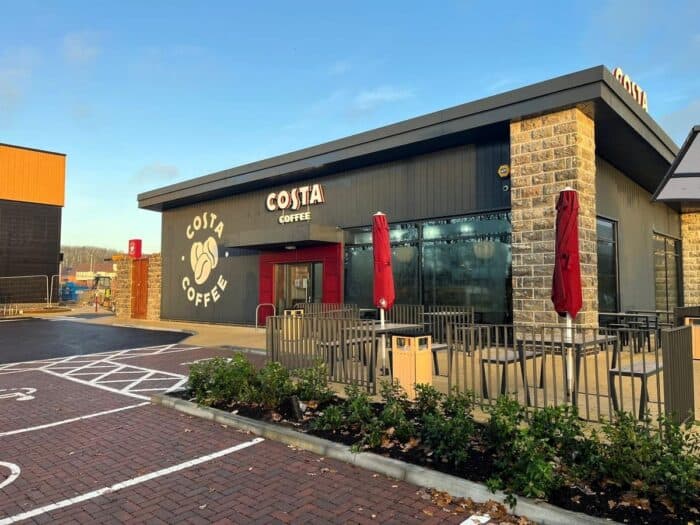Arabica coffee prices soared to a 2.5-month high on Monday, driven by mounting concerns over a potential shortfall in Brazil’s upcoming coffee harvest.
July arabica coffee contracts (KCN25) closed up by 2.55% (+10.20 cents), while July robusta coffee futures (RMN25) edged slightly lower by 0.04% (-2 points). The sharp rise in arabica was primarily fueled by forecasts of a significant decline in Brazil’s 2025/26 arabica coffee crop.
Last week, Rabobank revised its outlook, predicting a 13.6% year-on-year drop in Brazil’s arabica output to 38.1 million bags. The bank cited prolonged dry weather in key coffee-growing regions, which severely hampered the crucial flowering stage of coffee trees. In contrast, robusta coffee prices faced downward pressure after Rabobank projected a 7.3% increase in Brazil’s 2025/26 robusta production, reaching a record 24.7 million bags.
Adding momentum to arabica’s rally was the strengthening of Brazil’s real, which climbed to a three-week high against the US dollar. A stronger real typically discourages Brazilian coffee farmers from exporting, tightening global supply and supporting higher prices.
However, not all weather developments were bullish. Somar Meteorologia reported that Minas Gerais — Brazil’s largest arabica-producing region — received 38.7 mm of rain in the week ending April 19, a staggering 490% above the historical average. Improved soil moisture could alleviate some stress on coffee plants, potentially tempering price gains.
Increased inventories also cast a shadow on the rally. ICE-monitored arabica coffee stockpiles rose to 826,304 bags on Monday, the highest level in 2.5 months, signaling better near-term supply availability.
Meanwhile, broader global trade tensions and fears of higher tariffs on coffee imports threaten to dampen demand, particularly in the U.S., where consumers could face higher retail prices.
Still, underlying supply concerns persist. Brazil’s coffee export agency Cecafe reported a 26% year-on-year decline in March green coffee exports, totaling 2.95 million bags. Earlier this year, Brazil’s crop forecasting agency, Conab, estimated that the 2025/26 coffee crop would shrink by 4.4% year-on-year to a three-year low of 51.81 million bags. Conab also trimmed its 2024 forecast slightly to 54.2 million bags.
The lingering effects of last year’s El Niño-induced drought continue to pose risks across South and Central America. Brazil is enduring its driest conditions since 1981, according to disaster monitoring agency Cemaden, severely impacting coffee tree development. Colombia, the world’s second-largest arabica producer, is also grappling with the aftermath, although recovery efforts are underway.
Robusta coffee markets are likewise feeling the impact of adverse weather. Vietnam, the world’s top robusta producer, reported a 20% decline in coffee output for the 2023/24 season, producing just 1.472 million metric tons — the smallest crop in four years. The country’s coffee exports also tumbled by 17.1% year-on-year to 1.35 million metric tons. The Vietnam Coffee and Cocoa Association recently downgraded its 2024/25 production forecast to 26.5 million bags, from 28 million previously.
Despite these supply challenges, larger export volumes in some regions could weigh on prices. Brazil’s 2024 coffee exports jumped by 28.8% year-on-year to a record 50.5 million bags, according to Conab. Yet, the International Coffee Organization (ICO) noted that December global coffee exports fell by 12.4% year-on-year, suggesting regional variations in trade flows.
The U.S. Department of Agriculture’s (USDA) latest biannual report painted a mixed picture. Global coffee production is projected to rise by 4% to 174.855 million bags in the 2024/25 season, with a 1.5% uptick in arabica output and a 7.5% surge in robusta production. However, global ending stocks are expected to fall by 6.6%, reaching a 25-year low of 20.867 million bags, tightening the overall supply-demand balance.
Looking further ahead, the supply outlook remains precarious. Coffee trader Volcafe recently slashed its forecast for Brazil’s 2025/26 arabica production to 34.4 million bags — 11 million bags lower than its previous estimate. Volcafe also warned of a widening global arabica deficit, predicting a shortfall of 8.5 million bags for the 2025/26 season, compared to a 5.5 million bag deficit in 2024/25. If realized, this would mark the fifth consecutive year of global supply deficits.


